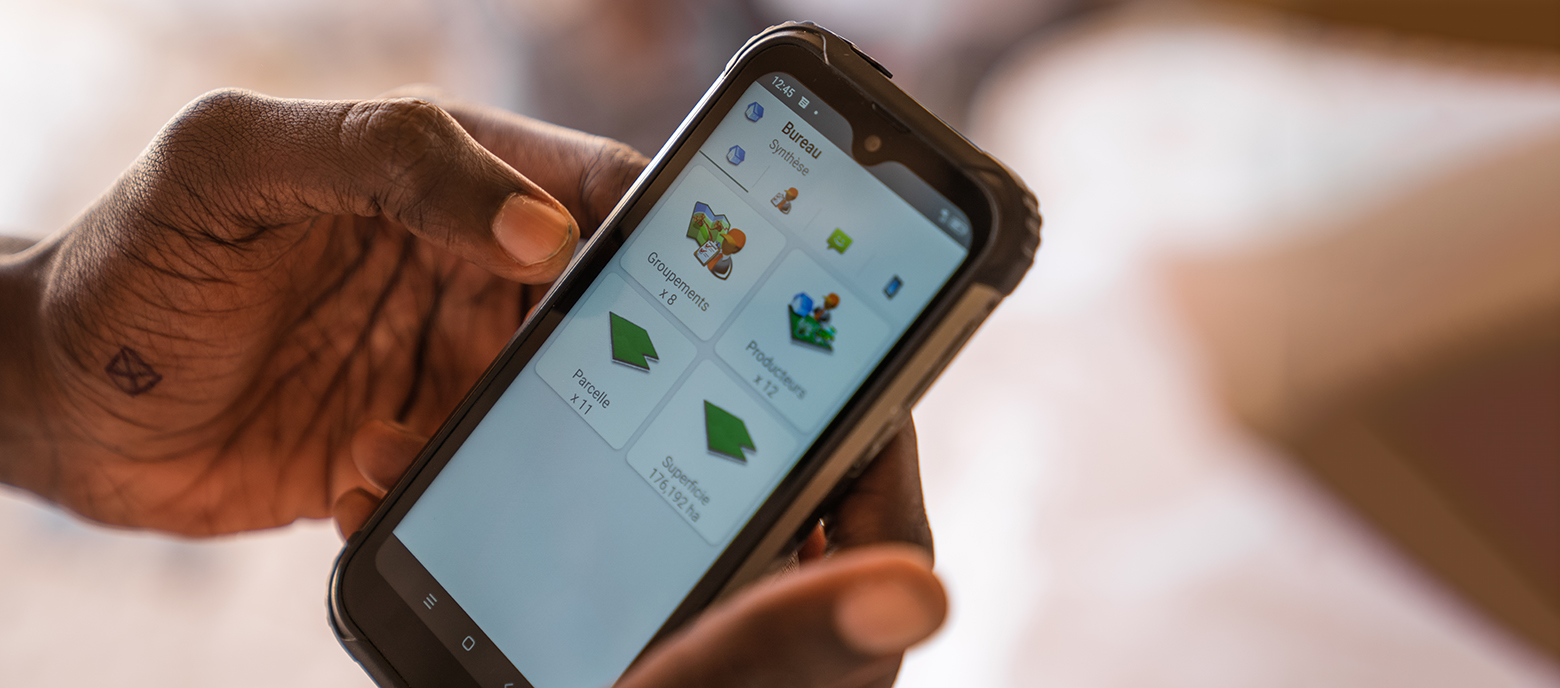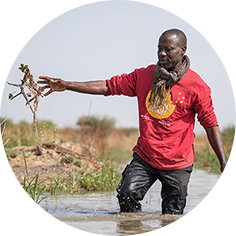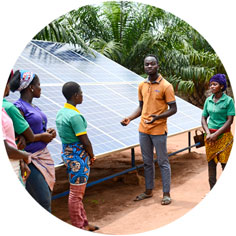Interview
‘Digitalisation as an opportunity to overcome differences instead of deepening divisions’
 Ms Diekjürgen, can digitalisation help to reduce global hunger?
Ms Diekjürgen, can digitalisation help to reduce global hunger?
Under the right conditions it has the potential to make agriculture more resilient, and more resistant to stress. Photos and artificial intelligence, for example, can help identify plant diseases. Farmers can quickly receive information on their smartphones advising them about what action to take. In some cases this can save harvests. Unfortunately, many regions of the Global South do not have enough agricultural extension officers to support farmers quickly on the ground and provide neutral knowledge. Digitalisation can fill this gap at least in part. Using digital tools along the supply chain, such as sensors that measure humidity in the soil or in storage facilities, reduces the amount of produce that perishes and allows water, a precious resource, to be used more effectively. In this way, post-harvest losses can be reduced, yields can be increased and less food needs to be imported. But there are major sticking points in the debate, such as inadequate broadband connectivity in rural areas or issues around ownership and subsequent use of the data produced.
Can you name other examples of digital tools in agriculture?
In Africa, close to 400 applications are currently on the market. More than half of them have to do with advice and information. Among other things, they deliver real-time weather data or market prices. Contractors now also loan their farm machinery via platforms, which saves costs and resources. Other apps show small farmers where they can obtain fertiliser and seed locally. Agricultural finance and corresponding advisory services, too, are now being further expanded in the digital context.
How widespread have such tools become?
The use of agricultural apps differs greatly across regions. While the digital ecosystem is booming all along the agricultural value chain in Kenya, there are very few applications on the market in Guinea-Bissau. There are various reasons for this. In the Global South, digital solutions were only introduced in the 2010s. On the African continent, most apps and platforms were only created in the past five years. Only 13 per cent of farmers there currently use digital tools, and most of them are farmers who are integrated into the value chains of larger enterprises and have higher profit margins.

Why is that?
Not everyone has the same access to the Internet and devices. This often applies to women, and we talk about the gender-based digital divide. This must not be the reality of digitalisation. It is in this area in particular that the principle of leaving no one behind is essential. Digitalisation should be used as an opportunity to overcome differences instead of deepening divisions. To achieve this, digital infrastructures need to be created or improved, especially in rural areas. In addition, digital training and access to data, services and applications must be affordable, for example by ensuring low prices for farmers. What is important here is to develop e-skills and digital literacy. We want farmers not just to be able to use the applications, but to understand what happens to their data and who benefits from it. Ultimately, digital applications are an investment that needs to be worth it for farmers.
Are there any countries that are digital pioneers?
India, and on the African continent Rwanda, Uganda, Kenya and, increasingly, Egypt. Kenya’s digital ecosystem is very dynamic. This is due to the existing infrastructure for digital applications, in other words, servers, Internet, and electricity. At the same time, agricultural research is very advanced, and the government has created good conditions for agricultural businesses and young entrepreneurs. Another important factor is cooperation with mobile Internet providers, which affects pricing. A digital ecosystem can develop more quickly when these conditions are favourable.

How does GIZ support innovative approaches to food production?
Overall, there are more than 320 digital applications for agriculture, which we have developed in collaboration with our partners and which are made available to stakeholders in the agri-food industry. They enable or improve market access, for example, or they make supply chains more efficient. At the same time, it’s also about digitally securing data and complying with standards. There’s great potential for developing productive, climate-resilient and low-emission agriculture. And producers and consumers can be brought together. Furthermore, it’s always important to increase digital participation among the farming population within the supply chains. GIZ is committed to applying the Principles for Digital Development (PDDs) and therefore supports open-source systems, close involvement of users, and compliance with data protection regulations.
What does that mean in practice?
The INATrace tool, for example, makes the value chain more transparent by allowing end products to be traced. This is important in order to certify products and improve trust between stakeholders. People in supermarkets in Germany can thus find out about the conditions in which their food is produced. What wages are being paid? How are livestock being kept? INATrace connects a coffee-producing women’s cooperative in Rwanda with German customers.
But there is only so much digitalisation can do…
Of course. It can’t stop climate change, for example. But apps, radio services and platforms can provide farmers with extension services that alert them to climate variations or extreme weather events, for example. That turns abstract data into concrete options for action. But digitalisation is not a cure-all. Responding to global, complex problems such as poverty, inequality and climate change also requires a global effort and careful assessment of the advantages and disadvantages of using digital solutions. Digitalisation is not an end in itself, and the resources used must be justified by the benefits it provides.
July 2022
Tradition meets technology
Report


